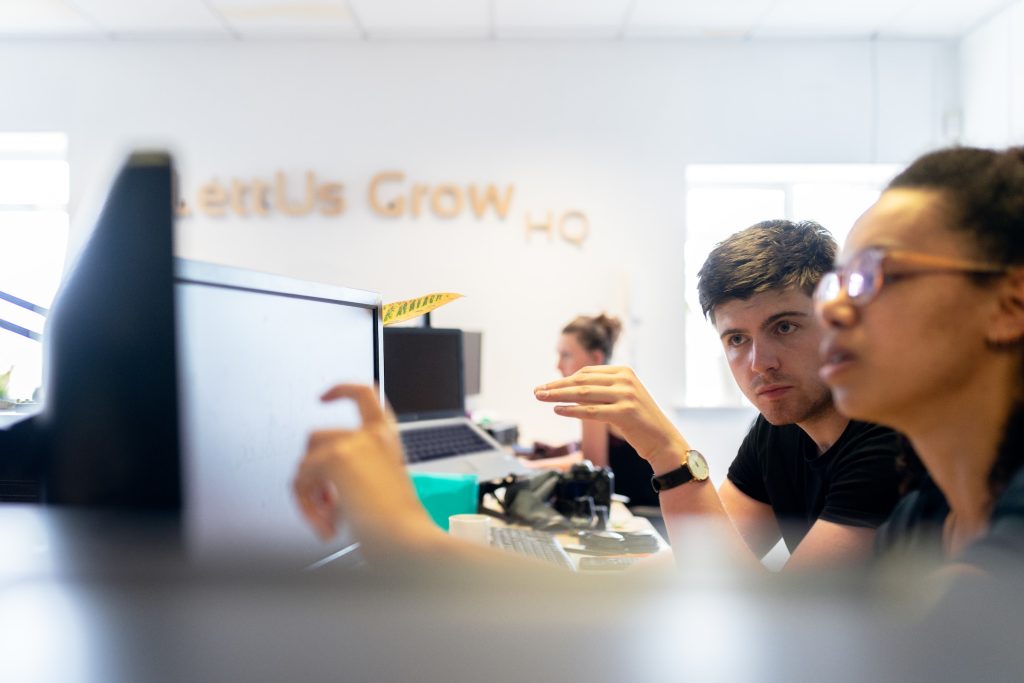In today’s highly competitive job market, finding and attracting top talent is crucial for the success and growth of any organization. To stay ahead of the curve, businesses must employ advanced tools and technologies to optimize their hiring processes.
One of the keys to successfully hiring top talent is optimizing your tech stack. This refers to the collection of software and tools used by your HR and recruitment team to streamline the hiring process. By selecting and integrating the right technology into your tech stack, you can significantly improve efficiency, reduce time-to-hire, and enhance candidate experience.
Firstly, consider incorporating an applicant tracking system (ATS) into your tech stack. An ATS allows you to track candidates’ progress throughout the hiring process, from application submission to onboarding. It also enables better collaboration among recruiters and hiring managers, ensuring a seamless flow of information. Furthermore, many ATS platforms offer AI-powered features like resume screening and automated interview scheduling, enabling you to quickly identify qualified candidates while saving valuable time.
Another essential tool to optimize your tech stack for hiring is video interviewing software. Traditional face-to-face interviews are often affected by logistical challenges like scheduling conflicts or geographical limitations. By introducing video interviewing solutions into your tech stack, you can overcome these hurdles while providing a more flexible experience for both candidates and interviewers alike. Additionally, this approach allows for easy recording and playback of interviews, simplifying evaluation processes later on. Embracing video interviewing not only facilitates a more inclusive recruitment strategy but also demonstrates adaptability in utilizing modern communication technologies.
In this blog post, we’ll explore the significance of optimizing your tech stack for hiring and provide a comprehensive guide to help you make the most of these technology investments.
The Tech Stack in Hiring
Before delving into optimization strategies, let’s establish a clear understanding of what we mean by a “tech stack” in the context of hiring. Your hiring tech stack encompasses the array of software, platforms, and tools you use to streamline, manage, and enhance your recruitment processes. This stack could include applicant tracking systems (ATS), job boards, interview scheduling tools, video conferencing platforms, and analytics software, among others.
The Importance of Optimizing Your Tech Stack for Hiring
- Efficiency and Productivity: An optimized tech stack simplifies and accelerates various aspects of the hiring process. It automates repetitive tasks, such as resume screening and interview scheduling, allowing your HR team to focus on more strategic activities like candidate engagement and cultural fit assessment.
- Improved Candidate Experience: A well-optimized tech stack ensures that the candidate journey is seamless and positive. This includes easy application processes, transparent communication, and swift feedback. A poor candidate experience can deter top talent from joining your organization.
- Data-Driven Decision Making: Modern tech stack components often come equipped with robust analytics and reporting capabilities. Leveraging these tools allows you to track key hiring metrics, identify bottlenecks, and make data-driven decisions to refine your recruitment strategies continually.
- Cost Savings: By automating manual tasks and reducing administrative overhead, an optimized tech stack can lead to significant cost savings in the long run. It allows you to allocate resources more efficiently and reduce the time-to-fill positions.
Now that we understand the significance, let’s explore a step-by-step guide to optimizing your tech stack for hiring.
Step 1: Assess Your Current Tech Stack
Begin by conducting a thorough audit of your existing hiring technology. Identify all the tools and software your team is using, and evaluate their effectiveness. Are there redundancies or gaps in functionality? Are you fully utilizing the features of each tool? Assessing your current tech stack is crucial to understanding where improvements are needed.
Step 2: Identify Pain Points and Objectives
Next, pinpoint the pain points in your hiring process. These could include slow response times, a lack of transparency, or difficulties in tracking candidate progress. Simultaneously, define your objectives for optimization. Do you aim to reduce time-to-hire, enhance the quality of hires, or improve the candidate experience? Having clear goals will guide your tech stack optimization efforts.
Step 3: Research and Select the Right Tools
With your pain points and objectives in mind, research and select the most suitable tools and platforms to fill the gaps in your tech stack. Consider factors such as ease of integration, scalability, and user-friendliness. Here are some key areas to focus on:
1. Applicant Tracking System (ATS)
An ATS is the backbone of your hiring tech stack. Look for an ATS that offers robust features like resume parsing, candidate scoring, and collaboration tools. Ensure it integrates seamlessly with other software you plan to use.
2. Job Boards and Posting Platforms
Choose job boards and posting platforms that align with your industry and target audience. Some job boards specialize in specific niches, while others have a broader reach. Make data-driven decisions about which platforms yield the best candidates.
3. Interview and Assessment Tools
Incorporate tools for video interviews, skills assessments, and psychometric testing, depending on your specific hiring needs. These tools can help you evaluate candidates more objectively and efficiently.
4. Communication and Collaboration Tools
Implement communication tools like email automation and chatbots to maintain transparent and timely communication with candidates. Collaboration platforms enable your team to collaborate effectively during the hiring process.
5. Analytics and Reporting Software
Invest in analytics and reporting tools that provide insights into your hiring metrics. This data will help you track progress, identify areas for improvement, and make informed decisions.
Step 4: Integration and Training
Once you’ve selected your new tools, focus on integration. Ensure that they seamlessly connect and share data with your existing systems, particularly your ATS. Provide comprehensive training to your HR team and other stakeholders to maximize the benefits of the new tech stack components.
Step 5: Streamline and Automate
One of the primary goals of optimizing your tech stack is to streamline and automate repetitive tasks. Configure your ATS to automatically screen resumes, send follow-up emails, and schedule interviews. Implement chatbots to answer frequently asked questions and provide real-time updates to candidates.
Step 6: Enhance Candidate Experience
Remember that an optimized tech stack should enhance the candidate experience. Tailor your communication to be personalized, informative, and timely. Implement feedback mechanisms to gather input from candidates and make improvements accordingly.
Step 7: Monitor and Refine
Continuous improvement is essential. Regularly monitor the performance of your tech stack components and gather feedback from your HR team. Use the analytics tools to assess the effectiveness of your recruitment strategies and adjust them as needed.
Conclusion
Optimizing your tech stack for hiring is a strategic investment that can yield substantial benefits for your organization. By carefully assessing your current tools, addressing pain points, and selecting the right technology, you can streamline your hiring process, improve the candidate experience, and ultimately attract top talent that will drive your company’s success. Embrace the power of technology to stay competitive and agile in the ever-evolving landscape of talent acquisition.
Interviewer.AI is a technology platform purposely built to support Recruiters and HR teams in finding top talent for their companies. We also work with universities to help them with admissions and coaching, helping them use technology to solve for talent and training. Our mission is to make hiring equitable, explainable, and efficient. to screen in advance and shortlist the candidates that meet the criteria set.
Gabrielle Martinsson is a Content Writer at Interviewer.AI. She’s a tech geek and loves optimizing business processes with the aid of tech tools. She also loves travelling and listening to music in her leisure.






